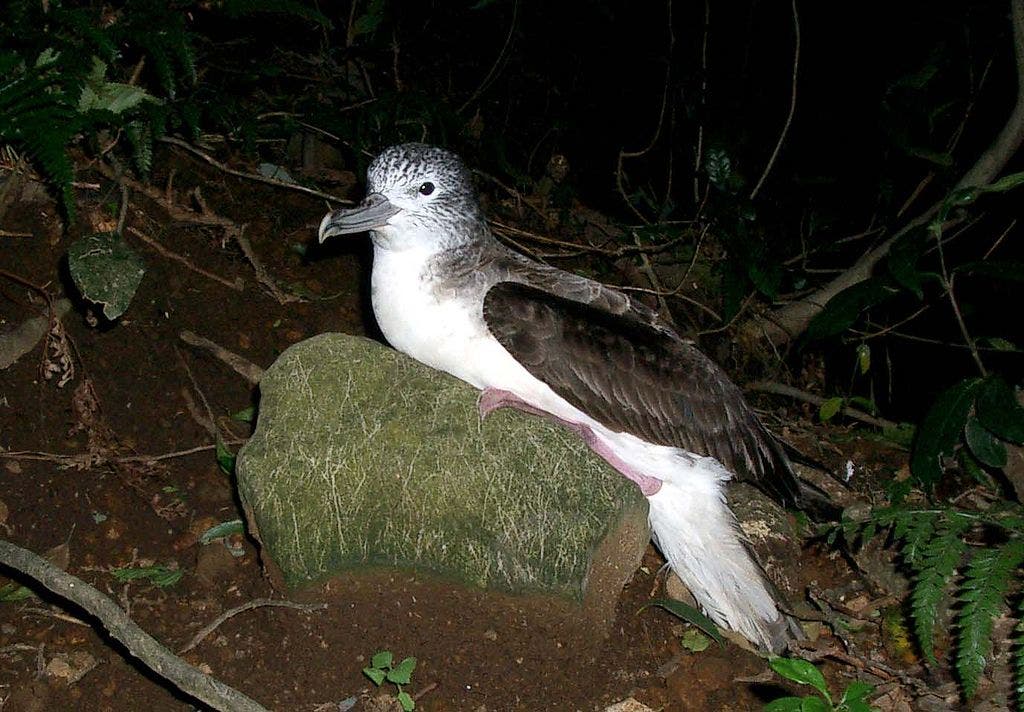If you are a bird living in an area with hurricanes or typhoons, it probably makes sense to try to avoid these deadly storms. In fact, a few studies using GPS trackers have found some ocean-dwelling birds do exactly that. However, there are exceptions, as in the case of streaked shearwaters. In fact, shearwaters sometimes fly straight into the storms to survive them.

We don’t know much about how seabirds respond to storms, because this kind of extreme weather is, by definition, a rare event — and it’s hard to analyze what happens at sea during a storm — plus, no two storms are the same. A new study hoped to address this, incorporating tracking data from 75 streaked shearwaters (Calonectris leucomelas) nesting on Awashima Island in Japan over an 11-year period.
Ken Yoda, professor of behavior and evolution, teamed up with meteorologists and biologists and analyzed tagging data to see which birds were flying over the Sea of Japan during a typhoon or tropical storm. Of the 75 birds, 13 were found to fly within 60 kilometers of the eye of the storm for up to eight hours, coping with strong winds.
“We never imagined the result would show that shearwaters sometimes fly directly towards the eye of a storm,” Emily Shepard, a study author, wrote in a blog post in The Conversation. “Previous studies showed that adults flew hundreds of miles to circumnavigate them. Yet our results showed the shearwaters chased the storm eye.”
Coping with a storm
As with other tubenose birds (so-called due to the arrangement of their nostrils), streaked shearwaters can cope well with windy conditions – using energy in the wind to fly with little flapping. The shape of their wings allows them to travel long distances without losing altitude. Tubenose birds tend to live in windy regions prone to cyclones.
When streaked shearwaters fly to the eye of the storm, they are usually in or near the eye wall, the region surrounding the storm, where the strongest winds are. But there comes a point at which they can’t match the wind speed. When this happens, the birds begin to drift with the wind and lose control of their travel direction, the researchers explained.
1/6 New paper! Streaked shearwaters show an astonishing response to typhoons, flying towards the eye of the storm (bird tracks in colour, storm eye in black). Work w @ELCShepard @AndrewRossLeeds & Ken Yoda @PNASNews #ornithology #seabird @BES_Move_SIGhttps://t.co/J6R0iNv0yV pic.twitter.com/BLg6siDu7i
— Emmanouil (Manos) Lempidakis (@Manos69188358) October 4, 2022
For their study, they used statistical modeling to dig deeper into the streaked shearwater’s movements. This showed that the birds sometimes circumvented storms but only when they were far out to sea and had a clear path around the storm. Sometimes, birds flew towards the storm when sandwiched between the storm and the land.
“In the northern hemisphere, cyclones move anti-clockwise. So birds foraging close to Japan could have been caught in the strong onshore winds behind the storm eye and forced to fly over land,” Shepard, a professor at Swansea University, wrote. “Flying over land is dangerous for shearwaters, due to the risk of uncontrolled landings.”
While agile in the air, these birds are clumsy on land. They have difficulties taking off even in normal conditions, which makes them vulnerable to predators. That’s why flying to the eye of the storm is the safer option. However, they need to know where the land is in order to avoid it. Adults seem to have an internal map that juvenile birds just don’t, the researchers conclude.
The study was published in the journal PNAS.


